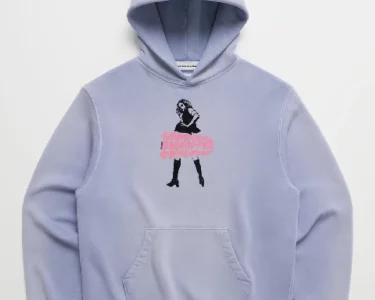The fashion industry in the USA is undergoing a profound transformation driven by technological advancements. From the way designers create and consumers shop to the very fabrics used in clothing, technology is revolutionizing every aspect of the fashion world. This article explores the key technologies influencing the industry, their impacts, and the future trends we can expect to see.
The Rise of Digital Design and Virtual Fashion

3D Design and Prototyping
3D design software is becoming a staple in fashion houses, enabling designers to create and visualize clothing in a virtual environment. This technology allows for more experimentation with shapes, colors, and textures without the need for physical samples. Designers can quickly iterate on their creations, leading to more innovative and daring designs.
Virtual Reality and Augmented Reality
Virtual Reality (VR) and Augmented Reality (AR) are transforming the shopping experience. Virtual fitting rooms allow customers to try on clothes from the comfort of their homes, reducing the uncertainty and inconvenience of online shopping. AR applications enable customers to see how garments would look on them through their smartphones, enhancing the interactive shopping experience.
Digital Fashion Shows
The COVID-19 pandemic accelerated the adoption of digital fashion shows, which have proven to be more inclusive and accessible. Brands like Gucci and Balenciaga have hosted entirely digital runways, reaching a global audience without the constraints of physical locations. These shows utilize VR and AR to create immersive experiences that captivate viewers.
Smart Fabrics and Wearable Technology
Innovations in Textiles
Advances in textile technology are leading to the creation of smart fabrics that can interact with the wearer. These fabrics can monitor health metrics, regulate temperature, and even change color. For instance, companies like Google and Levi’s have collaborated on jackets with touch-sensitive fabric that can control smartphones.
Wearable Devices
Wearable technology, such as fitness trackers and smartwatches, is becoming increasingly integrated into fashion. These devices are not only functional but also stylish, often designed by renowned fashion designers. The intersection of fashion and technology is leading to a new category of products that blend aesthetics with utility.
Sustainability and Ethical Practices
Eco-friendly Materials
Sustainability is a major concern in the fashion industry, and technology is playing a crucial role in addressing it. Innovations in materials science have led to the development of eco-friendly fabrics made from recycled plastics, organic materials, and even lab-grown leather. These sustainable materials reduce the environmental impact of fashion production.
Blockchain for Transparency
Blockchain technology is being used to enhance transparency and traceability in the supply chain. Consumers are increasingly demanding to know where their clothes come from and how they are made. Blockchain allows for secure tracking of a garment’s journey from raw material to finished product, ensuring ethical practices are followed.
AI and Machine Learning
Artificial Intelligence (AI) and Machine Learning (ML) are revolutionizing the e-commerce landscape. AI algorithms analyze consumer data to provide personalized shopping experiences. Recommendations based on previous purchases, browsing history, and even social media activity make online shopping more intuitive and satisfying.
Customization and On-Demand Production
On-demand production is becoming more feasible with advances in technology. Consumers can now customize clothing to their exact specifications, from size and color to fabric and design. This level of personalization reduces waste by ensuring that items are made only when there is a demand, aligning with sustainable practices.
The Metaverse and Digital Ownership
The concept of the metaverse—a collective virtual shared space—promises to bring significant changes to the fashion industry. Digital fashion items, which can be worn by avatars in virtual worlds, are becoming popular. These items can be bought, sold, and traded, creating a new economy around digital ownership.
Artificial Intelligence in Design
AI is beginning to take a more active role in the design process itself. AI-powered tools can generate new designs based on input from human designers or consumer trends. This collaboration between human creativity and machine efficiency could lead to groundbreaking new styles and concepts.
Circular Fashion and Recycling Technologies
Circular fashion aims to create a closed-loop system where garments are recycled and reused continuously. New recycling technologies are making it possible to break down old clothes into their component fibers and reconstitute them into new fabrics. This approach minimizes waste and conserves resources, contributing to a more sustainable fashion industry.
Analysis Table: Key Technologies and Their Impacts
| Technology | Impact on Fashion Industry |
|---|---|
| 3D Design Software | Enhanced design experimentation and faster prototyping |
| Virtual Reality (VR) | Immersive virtual fashion shows and fitting rooms |
| Augmented Reality (AR) | Interactive and personalized shopping experiences |
| Smart Fabrics | Integration of health monitoring and adaptive clothing |
| Wearable Devices | Fusion of functionality and fashion in accessories |
| Eco-friendly Materials | Reduction in environmental impact through sustainable fabrics |
| Blockchain | Increased transparency and traceability in the supply chain |
| AI and Machine Learning | Personalized shopping experiences and efficient inventory management |
| On-demand Production | Customization and reduction of overproduction |
| Recycling Technologies | Promotion of circular fashion and waste reduction |
Comparative Table: Traditional vs. Tech-driven Fashion Industry
| Aspect | Traditional Fashion Industry | Tech-driven Fashion Industry |
|---|---|---|
| Design Process | Manual sketching and physical prototypes | Digital design and 3D prototyping |
| Fashion Shows | Physical runway shows, location-bound | Digital fashion shows, globally accessible |
| Shopping Experience | In-store fitting and purchases | Online shopping with VR/AR fitting |
| Fabric and Materials | Conventional fabrics | Smart fabrics and sustainable materials |
| Supply Chain Transparency | Limited visibility | Blockchain-enabled transparency and traceability |
| Customization | Limited, often costly | On-demand, affordable customization |
| Production | Mass production, potential overstock | On-demand production, reduced waste |
| Consumer Interaction | In-person, limited feedback loop | Data-driven, personalized experiences |
| Sustainability Practices | Often secondary consideration | Integral to the design and production process |
| Market Reach | Geographically constrained | Global reach through digital platforms |
Conclusion
Technology is undeniably reshaping the fashion industry in the USA, driving innovation, sustainability, and a more personalized consumer experience. The integration of digital design tools, smart fabrics, and AI is creating a more dynamic and responsive fashion ecosystem. As the industry continues to evolve, the collaboration between technology and fashion promises to bring about more exciting developments, making the future of fashion both sustainable and technologically advanced.




